We engage in quality control in accordance with various sets of rules.
Quality control in manufacturing entails the management of the manufacturing process to ensure that manufactured products are consistent with a certain level of quality and the conducting of inspections to verify that products to be shipped out satisfy quality standards. For the promotion of quality control at Nishi-F, we have compiled an ISO 9001-based quality manual we call NFQ to carry out quality control actions accordingly. The contents of these actions consist primarily of process control, quality inspections, and quality improvements. The NFQ and statistical quality control methods are used to help create better products and make sure that client satisfaction is achieved.

- Japanese Industrial Standards (JIS)
- International Organization for Standardization (ISO)
- Vessel Act, Ship Safety Act, and other examples of maritime public laws
- SOLAS Convention
- Marine Stewardship Council (MSC)
- Japan Ship-Machinery Quality Control Association (JSMQA)
-
Process control
Each process is managed to efficiently manufacture exceptional products for our clients on time. Specifically speaking, we standardize written work procedures, collect and analyze on-site data using seven quality-control tools, render on-site locations visible, and otherwise maintain process stability.
-
Quality control
We inspect raw materials for products, the specifications of parts, production processes, and more to ensure that products comply with quality control standards.
Our quality control criteria are informed by various standards, including the Japanese Industrial Standards (JIS), the International Organization for Standardization (ISO), a compendium of various ship-related laws and regulations, and the SOLAS Convention, and have been adapted to inspections of a variety of different products. -
Quality improvements
Quality improvements involve the prevention of both the occurrence and recurrence of defective products. We endeavor to ensure that recurrence does not happen by analyzing the root causes of problems that have arisen and formulating measures for the prevention of a recurrence. Specifically speaking, we apply the Five Whys technique and QC Story method, conduct causal investigations, and have problems solved and improvements made by panels in each department.

International Organization for Standardization
The International Organization for Standardization (ISO) is a private sector nongovernmental organization that works to formulate international standards in industrial fields other than the electrical field. Headquartered in Geneva, Switzerland, it is a nonprofit juridical person constituted under Swiss law.
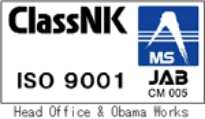
As a member of the Yamaguchi Educational Supporters Group
We champion companies that contribute to the growth of the community and society. We would like to root for the children of Yamaguchi Prefecture by teaching them that there are companies in their midst that may be struggling but are still working hard and that reasons for feeling passionate about life can be found even in familiar settings.
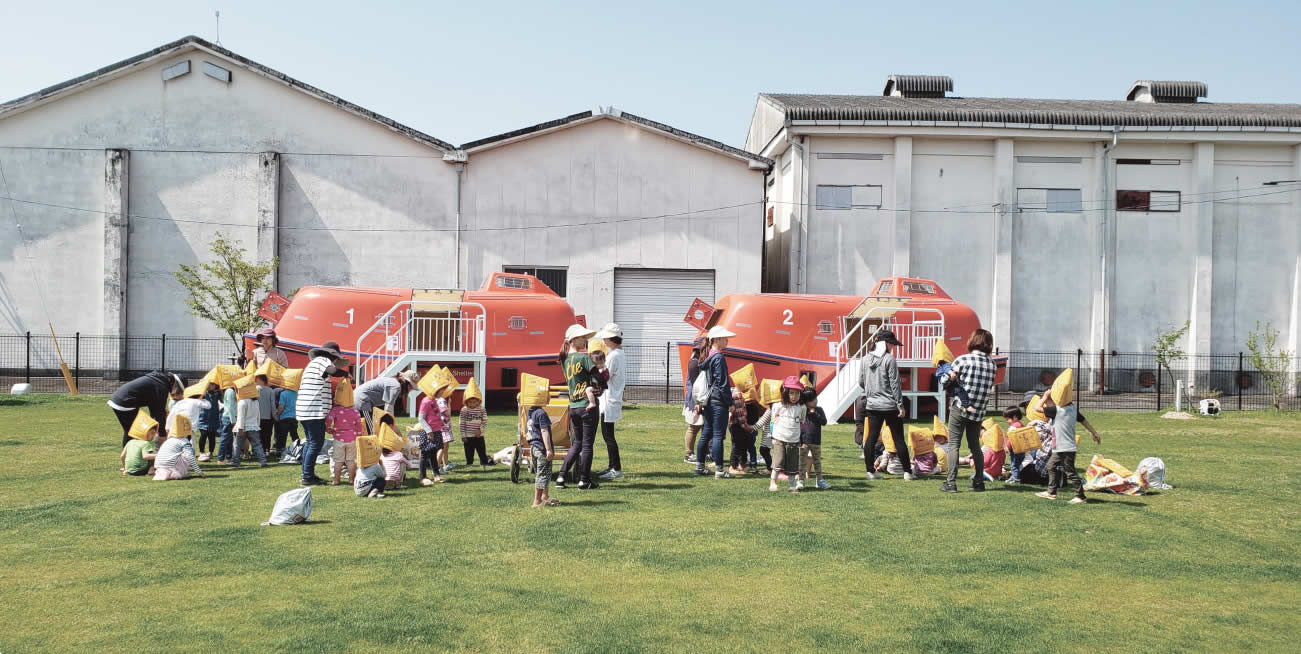

Marine Stewardship Council
MSC stands for Marine Stewardship Council. It was born of a volunteer program developed within the framework of activities carried out by the World Wide Fund for Nature for the protection of marine environments.
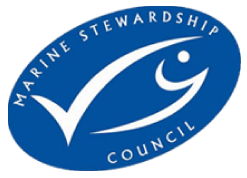
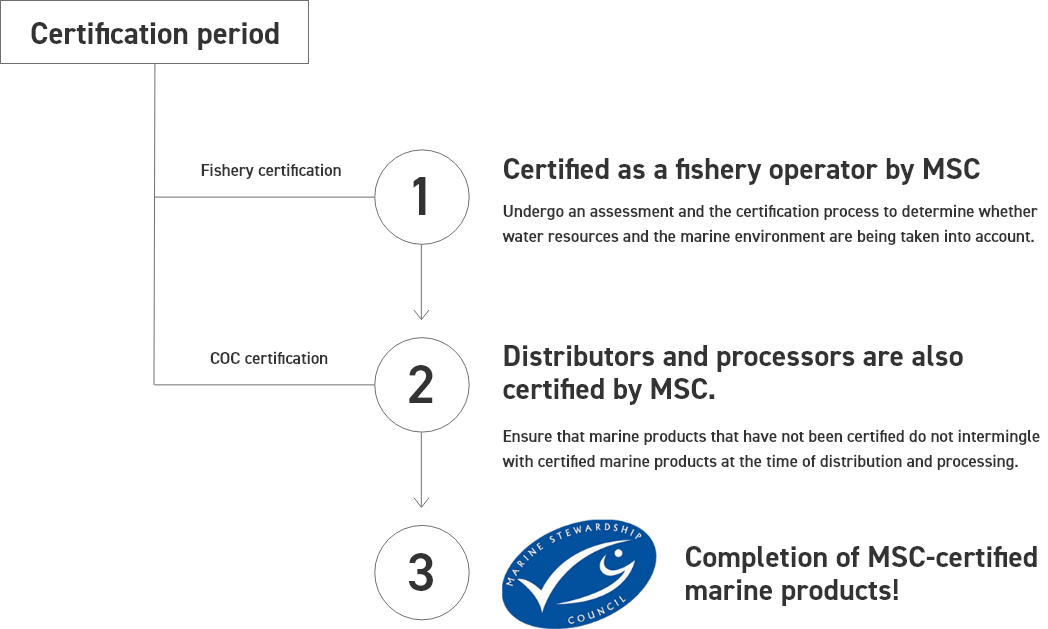
The MSC mark is the logo of the Marine Stewardship Council (MSC). This mark is applied to marine products—such as fish, shellfish, shrimp, and crabs—that meet certain conditions. These conditions consist of the realization of the sustainable use of natural marine products while preserving the marine environment. An international third-party organization, the MSC accredits certification bodies around the world that certify resource- and environmentally friendly fisheries. A product bearing the MSC mark has been certified as a product that was produced in a manner that protected the natural environment of the sea. This mark also represents the indirect support for marine environmental conservation that is provided by consumers and serves to encourage fishery operators that are focused on promoting such initiatives.

Japan Ship-Machinery Quality Control Association
An organization accredited by the Ministry of Land, Infrastructure, Transport and Tourism, the Japan Ship-Machinery Quality Control Association promotes the management of the safety of ships at sea.
The operations of the JSMQA are intended to promote the management of the safety of ships at sea and the management of human safety.
Aim
In the 1960s, marine traffic started to become more complex and diverse as Japan’s economy underwent rapid growth and safety measures at sea increased in importance. In the area of marine engineering, there came to be an urgent need to develop a system of quality control to improve the reliability of products. The competent authorities with the Ministry of Transport (known today as the Ministry of Land, Infrastructure, Transport and Tourism) also expanded and streamlined the certified workplace system and type approval system as they pertained to industrial products for ships and released a policy to enhance and fortify the ship inspection system. Under these circumstances, procedures to establish a primary promotional body were carried out jointly by public- and private-sector players. On July 1, 1971, the establishment of the Japan Ship-Machinery Quality Control Association was approved by the Minister of Transport.
Objectives
- 1 To improve quality control for certified workplaces
- 2 To improve quality control for workplaces seeking to be certified as certified workplaces
- 3 To improve quality control for persons who have been granted type approval
- 4 To improve quality control for persons seeking to be granted type approval
- 5 To improve technology for service sites that maintain inflatable life rafts, GMDSS lifesaving equipment, and other such items
- 6 To conduct studies and research on quality control and in-house inspection standards for certified and type-approved articles
- 7 To conduct surveys, testing, and research on improving the quality of certified articles and statutory articles for ships
- 8 To publish reference books and other printed materials
- 9 To engage in other programs needed for the attainment of the objectives of this Association
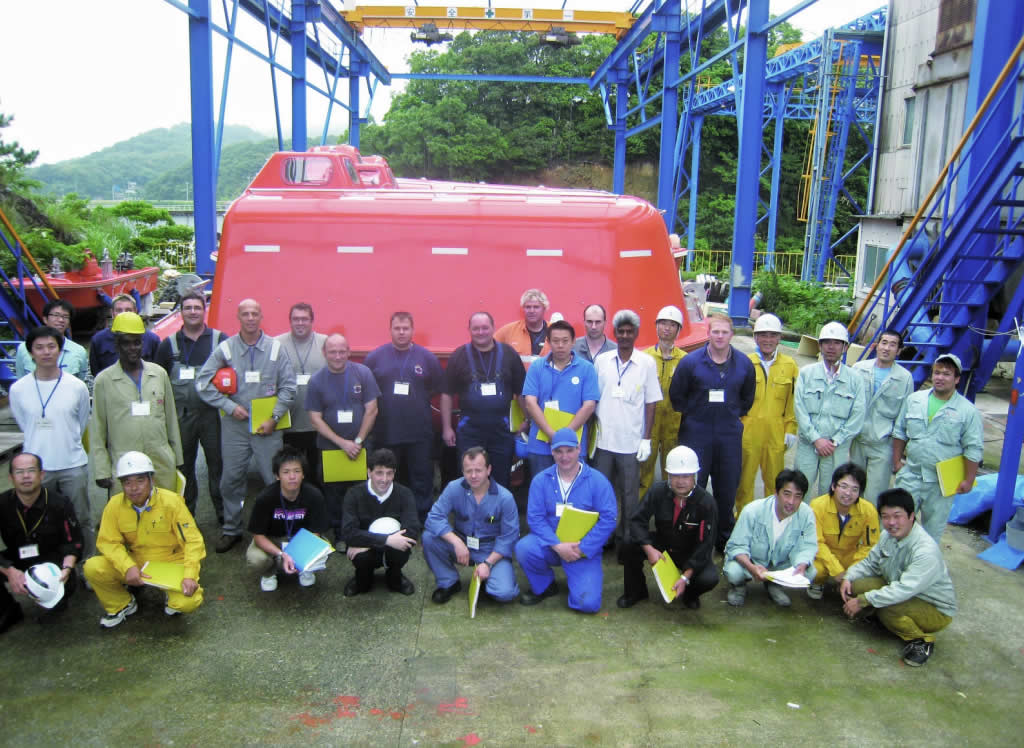

Fiber Reinforced Plastics ship recycling system
What is the FRP recycling system?
The FRP recycling system targets small-sized vessels made using fiber-reinforced plastics (FRP vessels) (such as motorboats, yachts, PWCs, and fishing boats). Run by the Japan Marine Industry Association’s FRP Ship Recycling Center, the FRP ship recycling system transports FRP scrap obtained after the rough disassembly of discarded FRP vessels collected at collection points designated by clients to intermediate treatment sites where it is crushed, sorted, and ultimately recycled (material and thermal recycling) through cement firing. We participate in the recycling system operated by the Japan Marine Industry Association and are responsible for properly disposing of and recycling FRP vessels that our clients wish to dispose of and recycle. We ask that you understand and cooperate with us in the implementation of a small-sized FRP vessel recycling system.
For more information, inquire at any place where this mark is displayed.
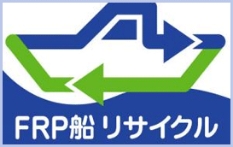
In November 2005, the FRP vessel recycling system, which operates by properly treating and recycling discarded FRP vessels, was launched. Inquire at any place where this mark is displayed as concerns fees and other pertinent matters. If you are experiencing difficulties with the disposal of your FRP vessel, choose to recycle it in an environmentally friendly manner to honor the fact that it has been a valuable partner in your endeavors.
Covered areas: Okayama, Hiroshima, Yamaguchi, Kagawa, Ehime, Fukuoka, Oita, Nagasaki, Kumamoto prefectures




